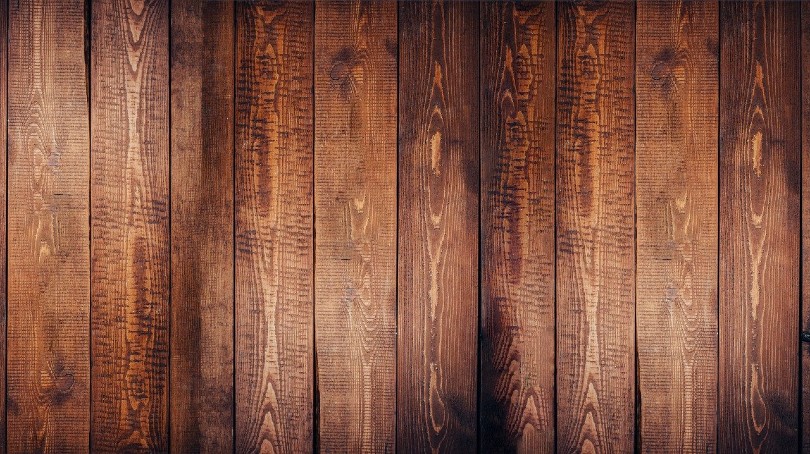
Cat owners, like toddler parents, are often forced to deal with unpleasant situations involving bodily fluids, including vomit. A necessary but unwelcome task, cleaning up cat vomit becomes more complicated when your kitty leaves their deposit on hardwood floors. Now you have to get rid of the vomit without damaging a sensitive surface.
To guide you in your unwanted task, we’ve collected 7 tips and tricks for cleaning up cat vomit from hardwood. Check them out, hold your nose, and get cleaning!
Before You Begin
Wearing disposable or rubber gloves can make your clean-up slightly more bearable. Use other protective gear as needed, especially if cleaning with chemicals. You’ll also want to keep your cat away from the area while you’re cleaning and have a trash can handy.
The 7 Tips on How to Clean Up Cat Vomit from Hardwood
1. Dab Up The Vomit – Don’t Wipe
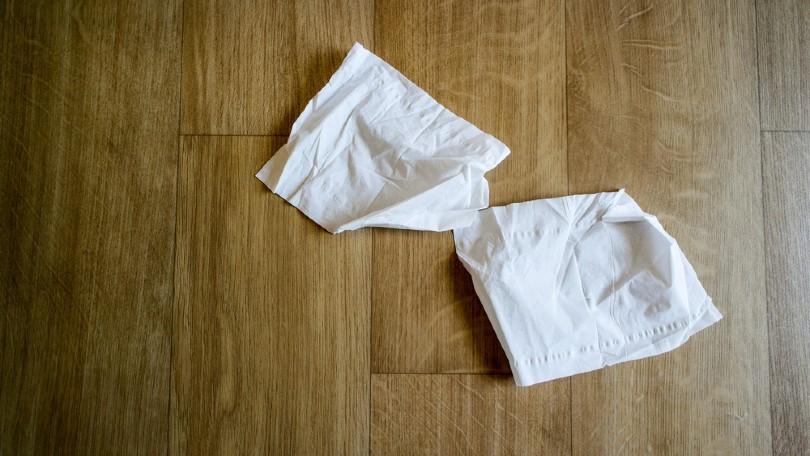
| Materials Needed: | Cleaning cloth or paper towels |
| Difficulty: | Easy |
If you find the vomit while it’s still fresh, cleaning up the vomit is your first priority. However, because of the seams in hardwood floors, wiping up the vomit can be problematic. You don’t want to push any into the cracks where it can seep down to the underlayer out of reach. Instead of wiping, use a cloth or paper towels to dab up the vomit. Another option is to cover the wet vomit with paper towels and allow as much as possible to absorb. Scoop up the entire mess and dispose of it.
2. Use Kitty Litter to Dry the Vomit
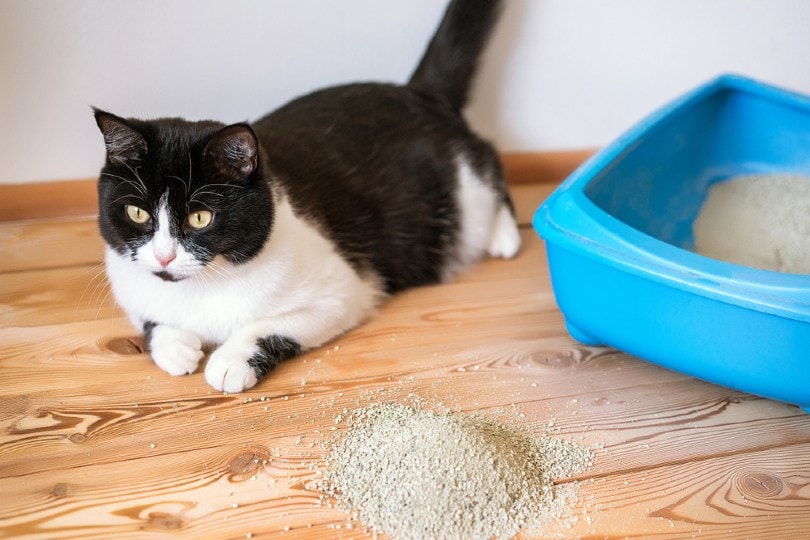
| Materials Needed: | Kitty litter, dustpan |
| Difficulty: | Easy |
Another option for cleaning up fresh cat vomit is to use kitty litter to dry it out. Again, the goal is to remove the vomit without allowing any to penetrate the underlayer of the hardwood. Take some clean kitty litter and completely cover the wet vomit. Give it a few minutes to absorb and then scoop the entire load into a dustpan and dispose of it. We’ll cover how to clean up any remaining stain and smell later in this article.
3. Use a Scraper

| Materials Needed: | Scraper, such as a dustpan, broom |
| Difficulty: | Easy-moderate |
Unfortunately, cats are masters at hiding when they aren’t feeling well. Because of this, there’s a good chance you won’t find the vomit on your hardwoods until it’s dried up. The good news is you won’t have to worry about wiping any vomit into the cracks on your floor. The bad news is you may need to apply a bit more muscle to clean it up. For this method, you’ll need something flat to serve as a scraper. A dustpan or large putty knife should do the trick. Scrape the dried vomit to loosen it and either scoop it into a trash can or sweep and then scoop.
4. Use Diluted Vinegar
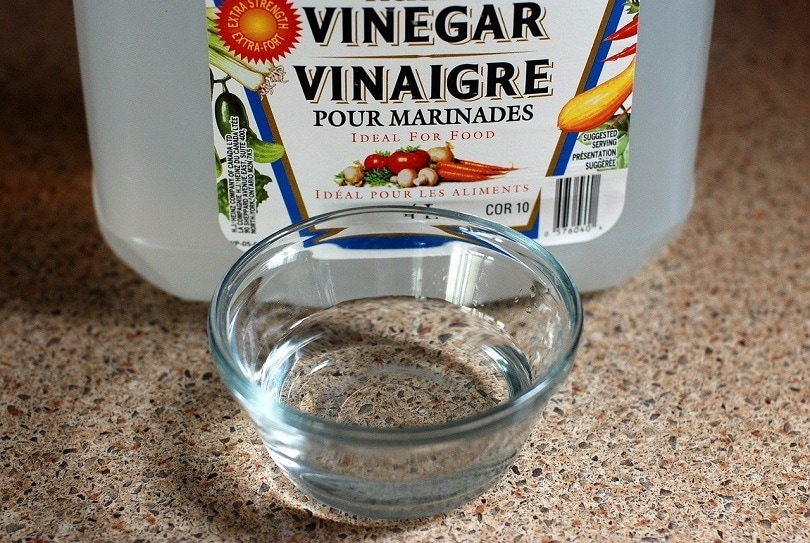
| Materials Needed: | Vinegar, water, cleaning cloth |
| Difficulty: | Easy-moderate |
Once you’ve removed the physical vomit, you can turn your attention to removing any stain and smell left behind. One option to do this, which is particularly effective on smells, is to clean the area with diluted vinegar. Full-strength vinegar could potentially damage the finish of wood floors so mix ½–1 cup with at least 1 quart of water before cleaning. Wet a cloth with the mixture and wring it out as thoroughly as you can to minimize the amount of liquid that contacts the wood floors. Liquid and wood floors usually don’t mix well but you don’t have much choice when it comes to cleaning up vomit. Scrub the vomit stain until it’s gone, then use a rag with clean water to rinse the area. Finally, dry with a clean rag.
5. Use Hydrogen Peroxide
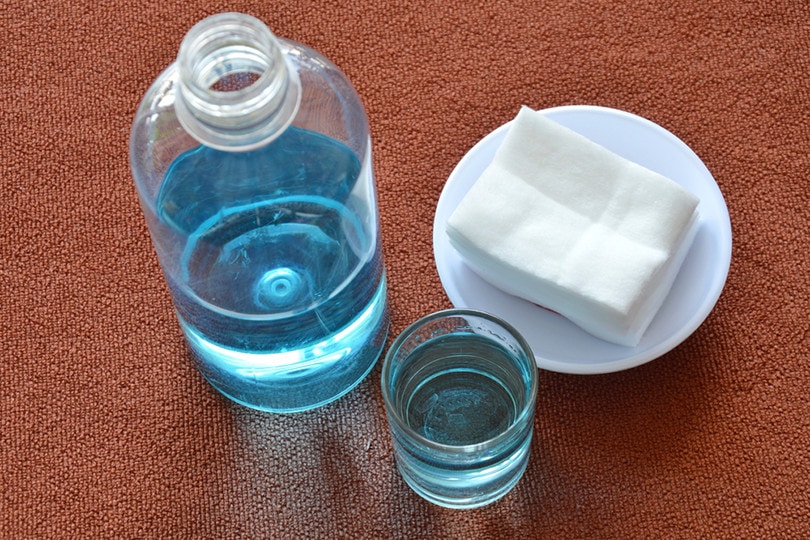
| Materials Needed: | Hydrogen peroxide, rag |
| Difficulty: | Easy |
To remove vomit stains from hardwood, try using hydrogen peroxide. Before using peroxide on your floors, however, test an out-of-the-way area to be sure they won’t be damaged by this method. Once you’re satisfied, place a clean rag or cloth over the vomit stain. Pour enough peroxide onto the rag to dampen but not soak it. Allow the peroxide to remain in contact with the stain for a few minutes. Once the stain is gone, wipe with clean water and then dry the area thoroughly.
6. Use a Commercial Hardwood Cleaner
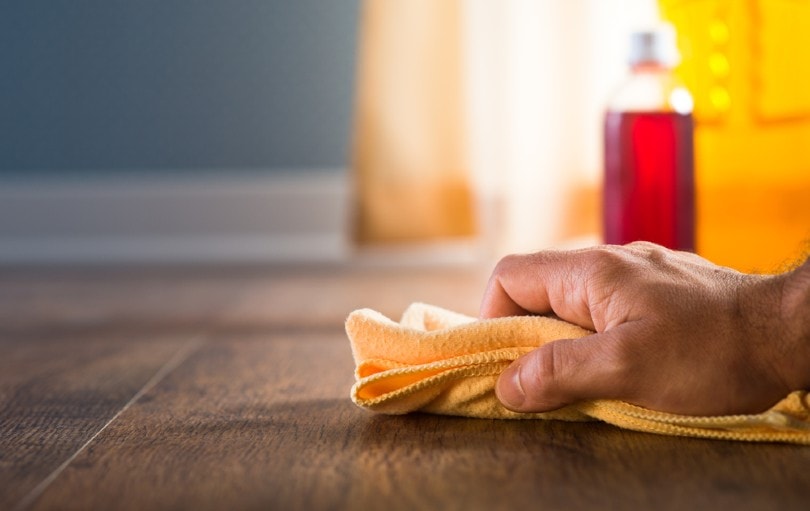
| Materials Needed: | Cleaner, rag |
| Difficulty: | Easy to moderate |
If you’re comfortable using commercial cleaning products, a good hardwood floor cleaner is useful for cleaning up cat vomit. The advantage of these products is that they’re formulated to be used on hardwood floors and usually don’t require rinsing or drying. For your cleaner, you could use an enzyme-based pet cleaner.
If you're trying to find an enzyme cleaner that does it all, we highly recommend our favorite cleaner, the Hepper Advanced Bio-Enzyme Pet Stain & Odor Eliminator Spray.
- ADVANCED ENZYMATIC CLEANER - Penetrates the most stubborn smells and stains at the deepest molecular...
- FOR ANY MESS, ON ANY SURFACE - This pet odor eliminator cleans your carpets, floors, furniture,...
- FRESH, NATURAL ODOR - Our unique formulation doesn't rely on dangerous or unpleasant chemical...
It permanently removes the very worst stains and smells you can imagine and makes clean up a breeze. There's even a 100% satisfaction guarantee! Click here to order a bottle today.
At Pet Keen, we’ve admired Hepper for many years, and decided to take a controlling ownership interest so that we could benefit from the outstanding products of this cool cat company!
Alternately, you could use a conventional cleaner, like Murphy’s Oil soap. Whichever option you pick, follow all directions on the label to keep yourself and your floors safe.
7. Sand Untreated Wood Floors
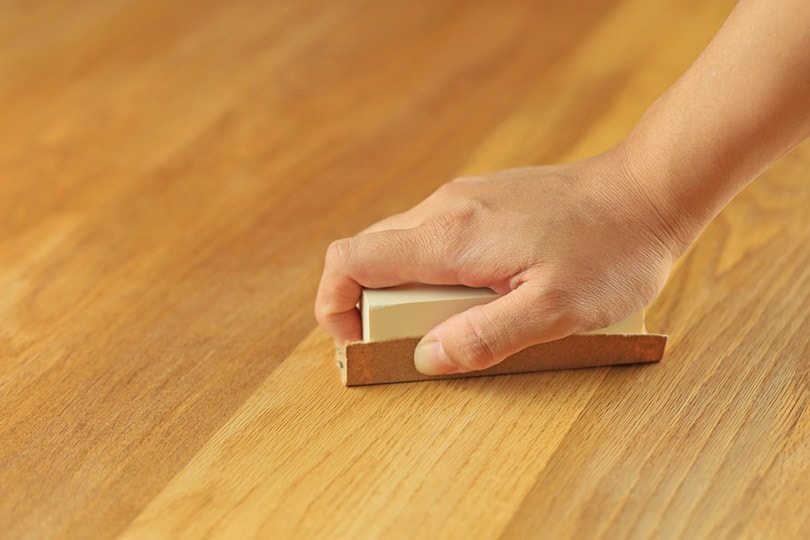
| Materials Needed: | Sandpaper, power sander (optional) |
| Difficulty: | Moderate-hard |
Typically, wood floors are treated with a protective coating to make them more durable and resistant to stains. However, if your cat happens to vomit on bare, untreated wood floors, removing the stain can be tough because the moisture will quickly soak into the wood. The quicker you can remove the vomit, the better to minimize the depth of the stain. After the vomit is gone, you’ll likely need to sand down the residual stain. This method isn’t complicated but will take more effort, especially if done by hand. Using a power sander will make the process quicker but be cautious not to over sand and gouge the wood. Once you deal with the vomit stain, consider sealing your floors to prevent future issues.
Why Is Your Cat Vomiting?
While it’s unlikely that you’ll avoid cleaning up cat vomit at least occasionally, vomiting should never be considered normal behavior for your kitty. It could be a sign of a health condition, especially if it occurs frequently.
Vomiting is a non-specific symptom in cats, meaning it could indicate multiple different medical conditions. To get to the bottom of your cat’s vomiting, it’s time for a trip to the vet. While it’s always possible that your cat has hairballs or is eating too fast, it’s essential to rule out more serious conditions.
Based on your cat’s medical history and physical exam, your vet may recommend blood tests or X-rays to help determine why your cat is vomiting. Sometimes, your cat may need to see a veterinary specialist for more advanced tests.
If your cat is diagnosed with a medical cause for their vomiting, be sure to follow your veterinarian’s treatment plan carefully.

Conclusion
Cleaning up cat vomit is no fun, especially when you must worry about damage to your wood floors too. Hopefully, these 7 tips and tricks make the process a bit easier, if not less unpleasant. Don’t ignore your cat’s vomiting, either, especially if it happens often and doesn’t just involve hairballs. If your cat does have a medical condition, the sooner it is diagnosed and treatment can begin, the better.
Featured Image Credit: ANASTASIIAKU, Shutterstock








